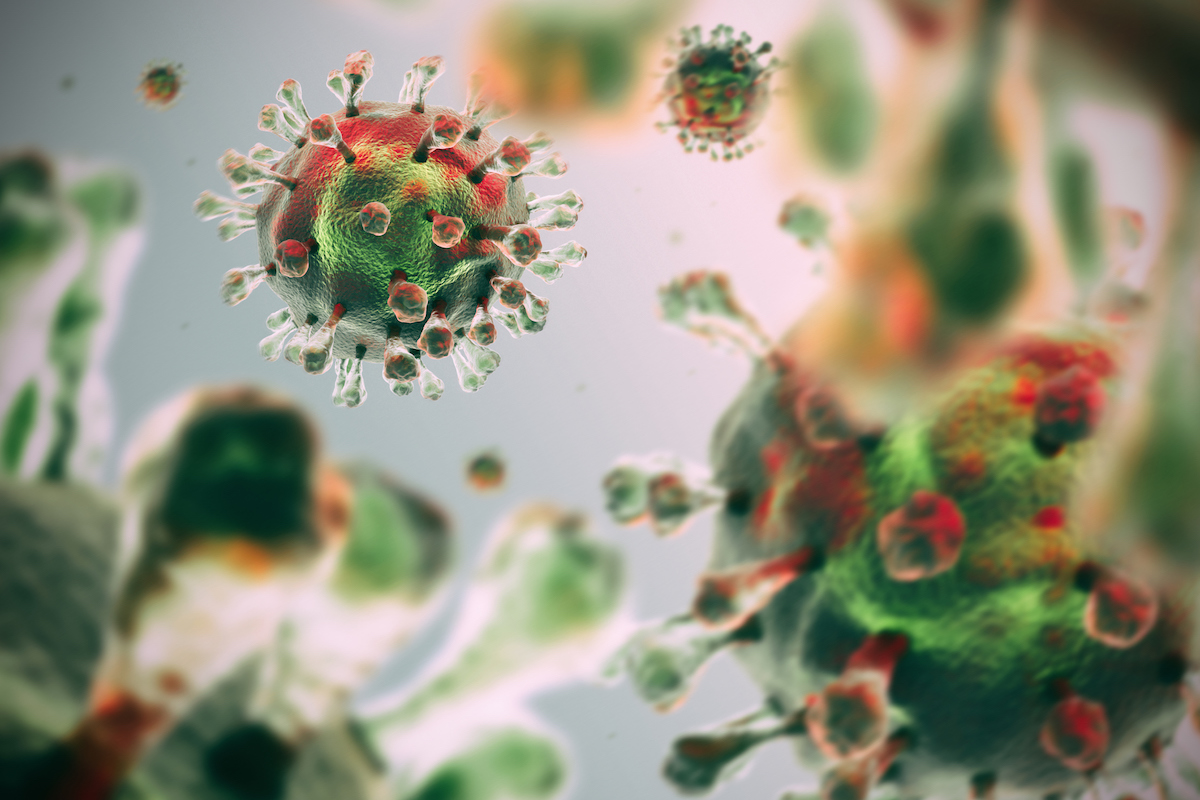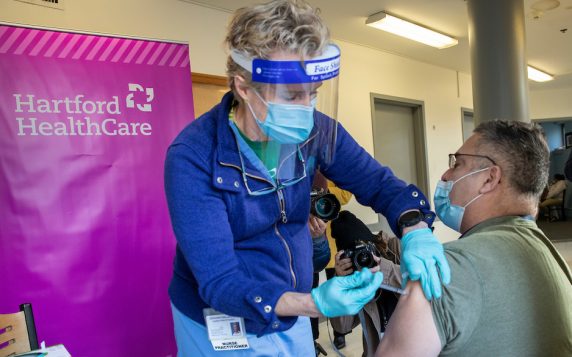Everyone knows when winter season starts in Connecticut. It’s the same time as germ season, when viruses, bacteria, fungi and the rest of the germ family gang up on those notorious indoor creatures called humans.
Since COVID-19 arrived last year, Americans have been hypervigilant about avoiding a specific germ, SARS-CoV-2, the virus that causes this coronavirus.
A virus and bacteria are germs with a difference. A virus, a non-living set of molecules, needs a host to survive. Bacteria, the type we eradicate daily on kitchen countertops and other household surfaces, are free-living cells that can survive inside or outside a body.
Here’s a look at both as we enter another germ season.
Viruses
Sick of hearing about hand-washing, masks and social distancing? It works. The flu season essentially vanished last winter. In the Southern Hemisphere, case numbers were so low that the Centers for Disease Control and Prevention said the season ended with “virtually no influenza circulation.” COVID-19 numbers were staggering, but they could have been much worse if not for the millions who followed safety protocols.
This all-purpose formula can help you avoid getting sick in the next cold-flu-COVID season, which starts now. Flu season is back this year.
“Like influenza and COVID-19, colds spread through the air via droplets expelled when a person sneezes or coughs,” says Dr. Virginia Bieluch, Chief of the Division of Infectious Diseases at The Hospital of Central Connecticut.
Related: Flu Season Returns: With COVID, a Possible ‘Twindemic’
COVID-19 has evolved into the Delta variant, a highly contagious variant transmissible through aerosols, tiny lightweight viral particles. A year ago, when larger, closer-contact droplets were more of a transmission threat, Americans were advised to wipe down all packages purchased to local stores to avoid any possible contact with the virus. But that concern has faded, assuming the surfaces are disinfected regularly.
A new Canadian study found that even within a grocery story the risk of picking up the virus from a hard surface is low. University of Guelph (Ontario) researchers found no positive results for the virus after taking close to 1,000 samples at four high-traffic grocery stores, swabbing cart handles, conveyor belts, freezer doors and other surfaces twice weekly for one month.
But previous tests have shown both influenza A and influenza B viruses can survive up to 48 hours on hard, nonporous surfaces such as stainless steel and plastic. The only last up to 12 hours on softer materials such as cloth, tissue and paper.
The COVID-19 virus, meanwhile, can survive on porous surfaces for days to weeks, according to Centers for Disease Control and Prevention. On porous surfaces, the virus lasts only minutes to hours. (Above, a rendering of a COVID-19 pathogen under a microscope.)
So how do you know, without a test, if you’re sick with the flu or COVID-19?
“There’s really not anything major to distinguish between the two,” says Dr. Ulysses Wu, Hartford HealthCare’s System Director of Infection Disease and Chief Epidemiologist. “Both of them can produce very high high fevers. Both of them can produce chills. And both of them can be associated with GI upset. But the things that would make you lean toward COVID are shortness of breath and cough.”
In a Delta resurgence, don’t take any chances. Even if we’re not required to wear a mask in some public settings this winter, be mindful of crowded public spaces and avoid unnecessary contact with frequently touched surfaces when away from home. But in a Delta-variant resurgence, a mask becomes the face of public health protection.
“Wearing a mask is the most inexpensive way to reduce spread of the virus,” says Dr. Faiqa Cheema, a Hartford HealthCare infectious disease specialist. “It prevents your respiratory droplets and saliva from remaining contained, thereby protecting others around you.”
Some viruses that cause colds such as rhinoviruses and respiratory syncytial virus (RSV), says Dr. Bieluch, can survive longer than the virus that causes COVID-19 on doorknobs, computer keyboards, elevator buttons and other hard surfaces. These germs may even be able to survive a swipe with a disinfecting wipe.
“If you touch this contaminated surface,” she says, “and then touch your mouth nose or eye you can develop a cold.”
Household Bacteria
You can’t avoid germs, even if you never leave your home. Researchers from the University of Colorado at Boulder who analyzed dust samples from 1,200 U.S. households in 2015 identified more than 9,000 species of microbes, bacteria and fungus. The type of bacteria found in a home can be different if only men or women live there. (Gentlemen, a male-dominant home is likely to contain two skin-dwelling bacteria from the genera Corynebacterium and Dermabacter, and the fecal-related genus Roseburia.)
In an enlightening exercise a few years ago, NSF International (a public health and safety organization) did a swab analysis of 30 common household items in the homes of 22 volunteer families.
The kitchen test found coliform, bacteria that includes both salmonella and E. coli and a possible indicator of fecal contamination, on:
- More than 75 percent of dish sponges and rags.
- 45 percent of kitchen sinks.
- 32 percent of countertops.
- 18 percent of cutting boards.
The bathroom, usually considered the grossest, germiest place in the house, was a coliform-test surprise:
- 27 percent of toothbrush holders.
- 9 percent of bathroom faucet handles.
That’s it.
The study found coliform in 81 percent of households, yeast and mold in 31 percent of households and staphylococcus aureus (staph) in more than 5 percent of households.
Toilet tip: The seat top is usually fine. Germs tend to congregate on the bottom of the seat. If you must lift the seat, use toilet paper or anything else to protect your hand.
How to Fight Household Germs
Cleaning removes germs, notes the CDC, but disinfecting destroys them. Soap and water removes most germs in the kitchen, but you’ll need a disinfectant occasionally. Check the label. A disinfectant, specifically registered with the Environmental Protection Agency, contains ingredients that destroy.
Follow directions on the label. Typically, the disinfectant must remain on the surface for a few minutes.
Also:
- When cleaning, use paper towels instead of cleaning cloths or towels, which retain germs.
- If you use a cloth towel, wash it in hot water.
- Try disposable sanitizing wipes that clean and disinfect.
- In the bathroom, clean and disinfect all surfaces regularly.
And, of course, wash your hands!





